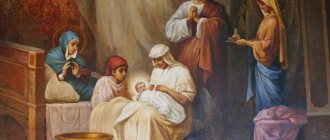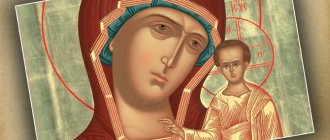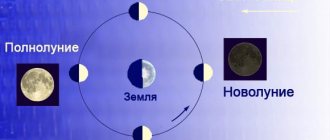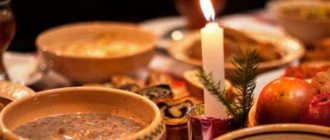National holidays in April 2020
People call the second month of spring the snowman, because the snow is already melting with might and main, freeing up the earth. At this time, we carefully monitored the weather so as not to miss the time to begin active work in the fields. In addition, there are many national holidays in April.
Experts recommend getting acquainted with the folk holidays of April. By observing folk traditions, you can achieve well-being and prosperity. Folk wisdom, passed down through the centuries, does not lose relevance, and for many, the testaments of their ancestors to this day are the best tips in everyday life.
April 1: Daria Gryaznaya
The snow has been actively melting since the 1st, so people call this day dirty. Our ancestors believed that Daria did not get dirty in vain and “put stress” on cooking.
April 10: Hilarion - Turn out the shafts
There was no snow left on Hilarion at all, and if there was any left, it quickly melted. The peasants took the shafts out of the sleighs and put them away for storage. According to tradition, on the day of the holiday they went to the ponds to clear them of algae. The first coltsfoot flowers were blooming. The leaves of these plants were used to treat many diseases.
April 11: Bereshchenye
On the day of the holiday, birch trees were revered. We definitely went to groves and forest edges to “listen” to the trees. This is how the beginning of sap flow was determined. In former times, birch sap was collected in order to cook sbiten from it. They also gave the juice to sick relatives so that they would get better quickly. The birch trees from which the sap was taken were “sealed” with clay so that the tree would not die and microbes would not get into the wound.
April 12: Ivan Climacus
On this day, it is customary to bake special cookies - ladders. To do this, the dough was rolled out into sausages, and small pies were placed instead of steps. Ladders were baked for each family member so that there was no place for diseases in the house, and all household members were lucky. Cookies were also taken to church to be sprinkled with holy water. In addition, they tried not to walk around Ivan’s yard, because the brownies “got crazy”, didn’t recognize the household members and could cause harm. To prevent trouble from happening, before sunrise they did not go beyond the threshold, did not go near the windows, and the cattle and poultry were tightly locked in the barn and chicken coop.
April 13: Hypatius the Wonderworker
On Hypatia, childless couples prayed to the saint for the conception and birth of long-awaited offspring. They also asked the saint to expel demons that could harm houses and people on this day. A woman born on Hypatia traditionally took coals from the stove and carried them to the field to light a fire. Tools for field work were carried through it, so that at the height of the suffering, plows and harrows would not let the peasants down.
April 14: Marya Empty cabbage soup
On this day, people protected themselves from the evil eye and damage with prayers and amulets. The holiday was named so because by April the supply of cabbage was running out, and the cabbage soup turned out to be liquid. Fresh herbs were added to the soup to compensate for the lack of cabbage. To do this, they took tender leaves of sorrel and nettle. They watched Marya as the rivers cleared of ice: if it melts quickly, then the year will be successful.
April 15: Titus Icebreaker
Titus was experiencing a time of famine for many due to the fact that grain supplies were running low. There was a saying that grain left for planting should not be wasted, even if it means selling livestock: “If you don’t leave good grain for planting, you will go hungry by winter.” On the day of the holiday, merchants tried to make noise so that the year would be successful for sales. They jingled coins in their pockets and loudly called out to customers, praising their goods.
April 16: Nikita Vodopol, Waterman's Treat
According to legends, on Nikita the mermen awaken after winter hibernation, and they must be appeased so that flooding does not occur in the villages. To do this, they threw bread, porridge or leftover chicken meat into reservoirs. Misfortune will happen if the treat is washed ashore by the waves. Fishermen traditionally poured oil into rivers, ponds and lakes, asking for good luck in fishing. Seeing a pike beating its tail is a sign of great happiness.
April 17: Joseph the Songsinger, Alder Shows
On the day of the holiday, after the service in the church, it was customary to bow to the birds, whose sonorous voices scared away evil spirits and fought against evil. According to legend, you can spend the arable season without back pain if you see cranes in the sky, lie on the ground with your back and turn around several times. The holiday was named Alder Bride because on this day it was customary to look for suitable trees for the construction of new wells. If you saw a lot of “earrings” on the trees, then the oat harvest will be good, and if the alder shed its buds before the birch, then a rainy summer is coming. Alder bark began to be harvested in the spring; it was used on the farm and to treat ailments.

April 18: Fedul Vetrenik
They opened the windows on Fedul and charmed the winds so that they would blow everything bad out of the houses. This tradition helped free the house from stale winter air, which could cause illness. On this day they went to the ravines, and if there was little snow left, they began to plow the fields.
April 19: Eutychius Quiet, Erema Proletny
On the holiday, warm and windless weather promised a successful year. According to tradition, on this day they worshiped apple trees that began to bloom. They propped up branches, whitened trunks and treated them against pests.
April 20: Shark Day
Akulina was considered the day when mermaids woke up, and women wore old clothes for them. In this way, the mermaids were cajoled so that they would not “drag” people during the summer. On this day, people walked to the banks of rivers and lakes with wormwood branches so that evil spirits could not harm. The first sedge was taken from the swamps and laid out at the door so that people with evil thoughts would not enter the house.
April 21: Rodion Icebreaker
The ice that day, standing in large piles in the narrow part of the river, promised a good harvest of grain. A clear sunny day foreshadows a warm summer. If the ice has not yet broken up on Rodion, and there is a lot of snow on the fields, then the year promises to be poor in terms of harvest.
April 22: Vadim Klyuchnik
On Vadim, they walked around the springs and cleared them of dirt in order to get some water, wash with it and drink to improve their health. The horses were given water to gain strength for the arable season. Often they began to drive cattle out to pasture on Vadim, and before that they were also given water to drink with the addition of that which was brought from the spring. This is how our ancestors prevented animal diseases.
April 23: Terenty Marevny
The day was named so because the Sun rose, as a rule, in haze or fog, and this promised a year rich in harvest. If the day began with a clear Sun, then the peasants believed that the first shoots would not rise and the fields would have to be plowed and sowed in a new way.
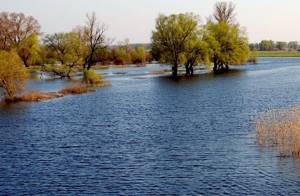
April 24: Antip Vodogon
They prayed to Antipas to get rid of toothache. According to legend, pain can be relieved by placing a silver coin on a sore tooth. They took it out, made a hole and passed a rope through it. Then the coin was hung on the icon of St. Antipas, and then worn around the neck without removing it. The day was named Vodogon because the last snow melted and the flood began. If by this day ice still bound the rivers, then the year was considered poor for harvest. They did not plant on Antipas, believing that there would be no shoots and the plants would “drown.”
April 25: Vasily Parilshchik
The day is called the soaring day because the earth begins to “float” due to sudden warming. If the earth “gave up water,” then the year was considered successful for the harvest of grain and flax. We moved carefully through the forest so as not to inadvertently meet the owner of the forest - the bear. After leaving their dens, they had a bad temper and could harm people.
April 26: Thomaida Medunitsa
On this day we went to buy the herb lungwort, which was used to make vitamin-rich salads and teas. Along the way, they picked sorrel to cook soup and bake sweet pies. On this day, in order to avoid encountering a bear and to ward off the devil, they put on sheepskin coats inside out.

April 27: Martyn Lisogon
On Lisogon, according to legend, foxes began to dig new holes, distracted from everything else, and they were easy to get. Hunters went out to hunt, and the luckiest ones returned with rich booty. Seeing a raven on this day means meeting a wolf. Cawing birds did not promise happiness, and if the hunters heard them, they would definitely spit over their left shoulders. Also on this day, they tried to work as much as possible in order to plow more land for crops.
April 28: Pudov day
On Pudov day the hives were checked. If the first flowers had already bloomed, the hives were put out on the streets. According to legends, the first honey had special healing powers, so beekeepers rejoiced at the early emergence of insects.
April 29: Arina - “Snatch the Shores”
By this day, the wide floods had subsided, the rivers were returning to their previous channels, but they tried not to go onto the banks, knowing that the washed-out edges were fragile and you could fall from them. Seedlings were transplanted onto Arina, charming her for a rich harvest. Also on this day, tree trunks were whitewashed.
April 30: Zosima Pchelnik
On Zosima they feasted on honey and watched the bees. If they survived the winter well and are actively working, then the year will be fruitful. On this day, seriously ill patients were given a drink of enchanted honey, believing that the drink would help them gain strength and defeat the disease.
The wise precepts of our ancestors, collected in signs and folk holidays, help to this day. In earlier times, observing the weather helped determine favorable times for planting certain crops and predict weather conditions for the entire month. Now these signs will help gardeners and gardeners. The covenants of grandmothers also help to preserve the family hearth and protect the family from any evil.
Lazarev Saturday
The Saturday that comes before Palm Sunday is called Lazarus Saturday. In 2020, this holiday falls on April 20. On this day, everyone remembers the miracle of the resurrection of Lazarus by Jesus Christ. Lazarus is a young man who was forced to die in order to show the whole world how sinful he was. The horror of Lazareva’s death overshadowed Jesus Christ, and he shed tears. Because everyone must remember that every creature of God is doomed to eternal life, and only a human being, by its sinful essence, is doomed to death. And therefore Lazarus was resurrected from his tomb-cave. He lived for another three decades, preaching Christianity in Cyprus.
Calendar of state, international and church holidays for April 2020
The most important Orthodox holiday, Easter, falls in April 2020, as well as the Annunciation and Palm Sunday that precede it. What important dates should you remember when to visit the temple and pray for the dead, and when to pray to the saints asking for help and protection?

Church Orthodox holidays in April 2020
Orthodox church holidays in April 2020
April 4, 2020 (Saturday)
5th Week of Great Lent. Praise of the Most Holy Theotokos (Saturday Akathist).
April 7, 2020 (Tuesday)
Annunciation of the Blessed Virgin Mary. On this day, believers honor the memory of how the Archangel Gabriel appeared to the Virgin Mary in Nazareth and announced that she would conceive from the Holy Spirit and give birth to a baby. The Feast of the Annunciation is dedicated to how God condescended to fallen humanity and gave them a chance for salvation.
April 8, 2020 (Wednesday)
Cathedral of the Archangel Gabriel.
April 11, 2020 (Saturday)
6th Week of Great Lent (Week Week). Lazarev Saturday.
April 12, 2020 (Sunday)
Palm Sunday is a Christian holiday celebrated on the Sunday before Easter, that is, on the sixth Sunday of Lent. Dedicated to the solemn entry into Jerusalem of Jesus Christ
April 16, 2020 (Thursday)
Holy Week. Maundy Thursday. Memories of the Last Supper.
April 17, 2020 (Friday)
Holy Week. Good Friday. Remembrance of the Holy Saving Passion of our Lord Jesus Christ.
April 19, 2020 (Sunday)
Bright Resurrection of Christ. Easter. On this day, believers visit churches, celebrate Easter and Easter eggs, and light candles. At home, the family gathers at the dinner table and celebrates the resurrection of Christ - Lent ends.
April 20, 2020 Monday - April 26, 2020 (Sunday) - Bright Week.
The first week after Easter is called Bright Week or Bright Week. At this time, it is customary to relax, visit, enjoy life, find a reason to have fun and congratulate each other.
April 24, 2020 (Friday)
Celebration of the Icon of the Mother of God Life-Giving Spring.
April 28, 2020 (Tuesday)
Remembrance of the dead. Radonitsa. On this day we remember those who are no longer with us - families visit deceased relatives in cemeteries and pray for them.
Easter (Bright Resurrection of Christ)

That same religious holiday, when every old woman shouts to another across the street “Christ is Risen!”, and she answers her “Truly He is Risen,” falls on the 28th of April. This event is considered the greatest holiday for every Christian person. After the third day of his death, the Lord rose again, and his body succumbed to miraculous changes, according to the Holy Scriptures. On this day, according to tradition, they bake Easter cakes and go to bless the eggs. On this same day, Lent comes to an end.

